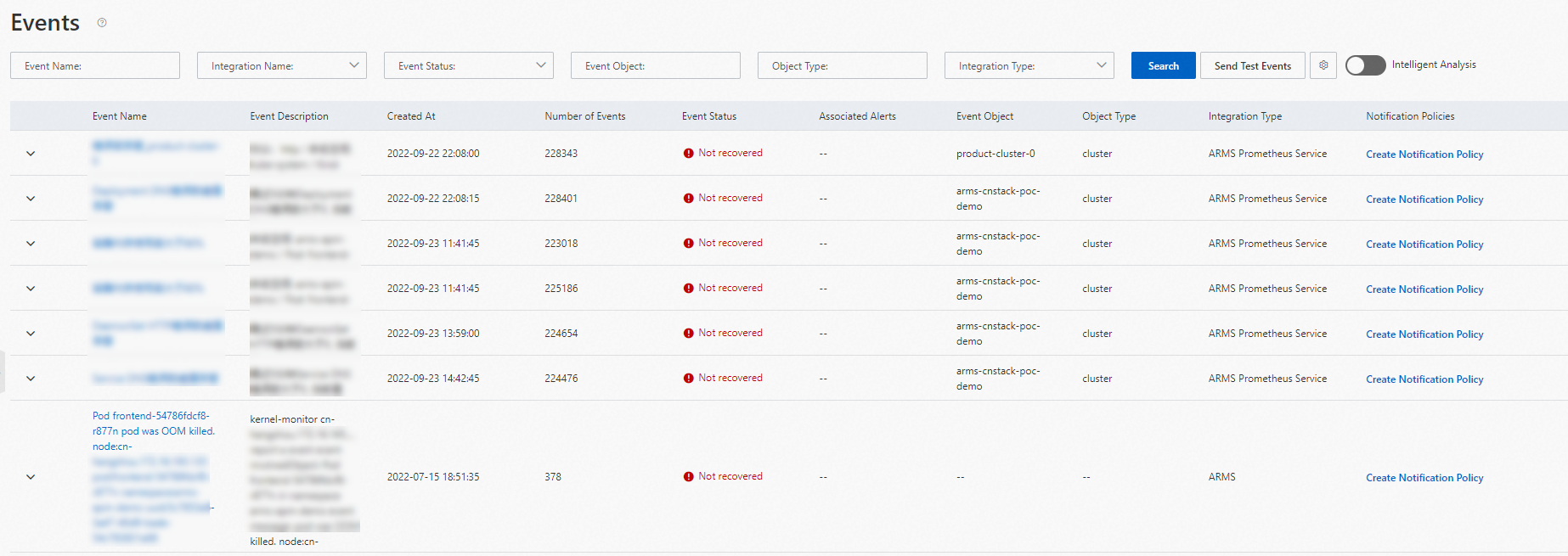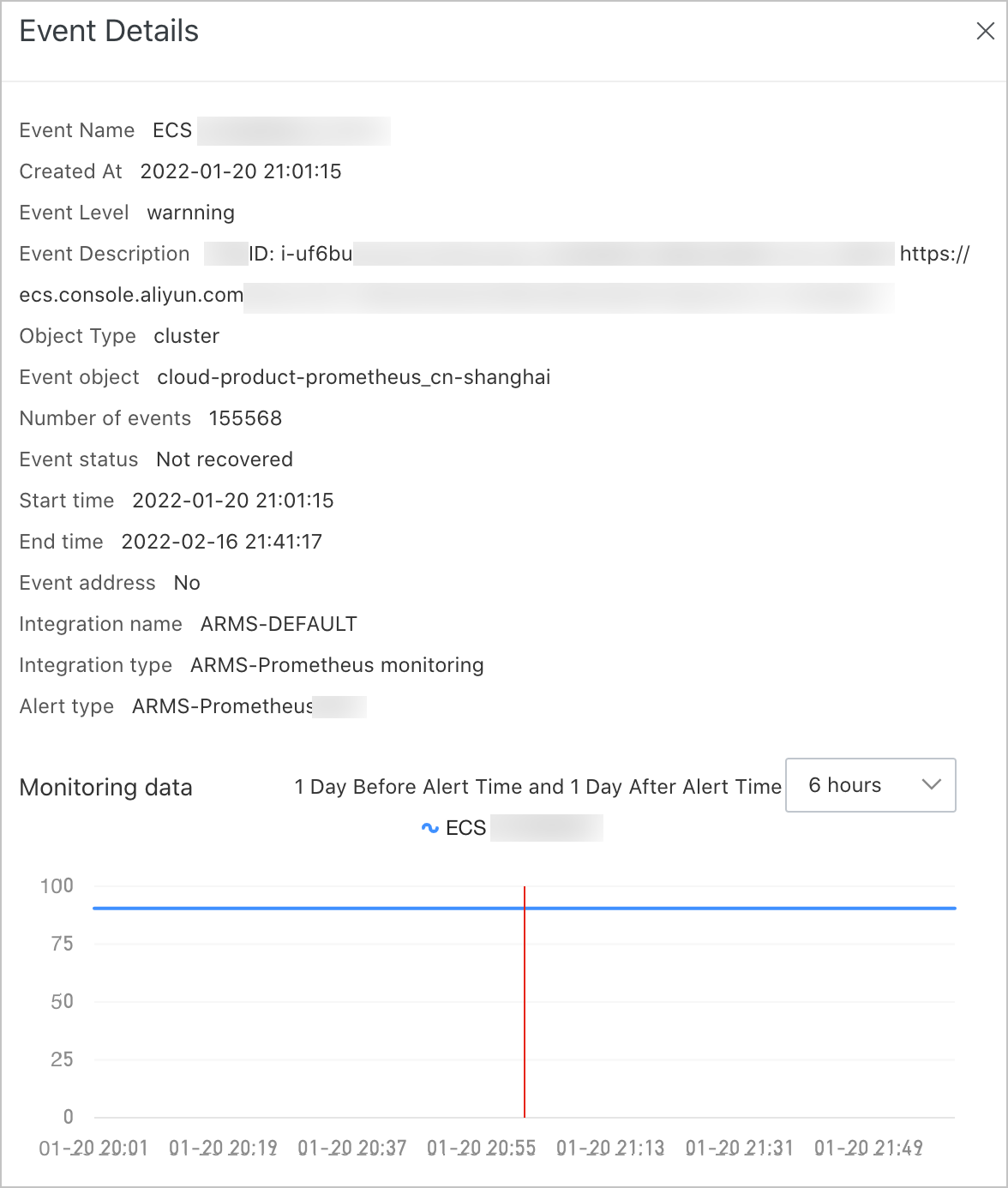Application Real-Time Monitoring Service (ARMS) allows you to view all alert events and query alert events based on the filter conditions that you specify on the Events page.
Go to the Events page
- Log on to the ARMS console.
- In the left-side navigation pane, choose .
Events
The Events page displays all alert events, regardless of the resolution status of the alerts. You can view details of an alert event such as the name, the notification policy, the time when the alert event is generated, the number of events with the same name, the status of the alert event, the object for which the alert event is generated, and the type of the object.

On the Events page, you can perform the following operations:
- Search for a specific alert event: Specify filter conditions and click Search.
Parameter Description Event Name The name of the alert rule based on which the alert is triggered. Integration Name The name of the service integration that reports the alert event. Event Status The status of the alert event. Valid values: - Not recovered: An alert is generated every time the alert event is detected.
- Silent: Within the specified time range, an alert is generated only when the alert event is detected for the first time.
- Restored: Within the specified time range, alerts are not generated when the alert event is detected.
Event Object The name of the object that is involved in the alert event. The object can be a monitoring task or a cluster. Object Type The type of the object that is involved in the alert event. Integration Type The type of the service integration that reports the alert events. Valid values: - After you click the name of an alert event, you can view the details of a specific alert event. For more information, see View the details of an alert event.
- Send an alert event to a specified service integration: Click Send Test Events. In the dialog box that appears, configure Integration Name and Event Content and click OK.
View the details of an alert event
You can view the basic information, monitoring data, and extended fields of an alert event on the Event Details page.

- From the drop-down list in the Monitoring data section, select a specific period of time to display data before and after an alert is triggered. You can select 6 Hours, 12 Hours, or 1 day from the drop-down list.
- Use the pointer to select a time range on the chart to view the statistics in the specified time range. To view the monitoring data that is generated within the original time range, click Reset.